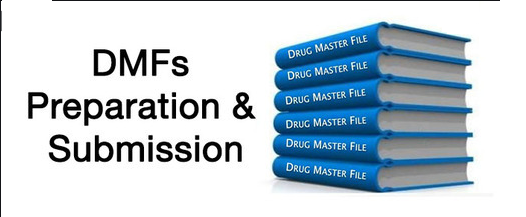Quality Excellence & Quality Culture Check
Addressing the sources of variability and defects is critically important when the failure rate is excessive or warranty obligations hurt profitability. The Quality Excellence Program helps business leaders, quality managers, and functional specialists to systematically improve process capability and consistently meet customer requirements at the lowest non-performance cost.
Quality is defined by the customer
In the final analysis, quality is defined by the customer, and features and freedom from deficiencies are key determinants of customer satisfaction. While the various quality experts may offer slightly different shorthand definitions of what quality is – “fitness for use” (Juran), “conformance to specifications” (Crosby), and “predictable degree of uniformity” (Deming) – these definitions are complementary rather than contrary, and each can come into significance at different phases of quality management activities. Today the concept of quality has expanded far beyond the manufacturing sector, to government agencies, healthcare, education, and non-profit organizations. Quality principles are being widely applied not just to products, but also to services, processes, and data. As a final note: the International Organization for Standardization (ISO) defines quality as the “totality of characteristics of an entity that bear on its ability to satisfy stated and implied needs.”
“Quality is neither mind nor matter, but a third entity independent of the two … even though Quality cannot be defined, you know what it is.” (R. M. Pirsig, Zen and the Art of Motorcycle Maintenance, pp. 185, 213)” … a condition of excellence implying fine quality as distinct from poor quality …. Quality is achieving or reaching for the highest standard as against being satisfied with the sloppy or fraudulent.”
Definitions of product quality arise from philosophy, economics, marketing, and operations management. He then goes on to build an eight-dimensional framework to elaborate on these definitions. Using this framework, he addresses the empirical relationships between quality and variables such as price, advertising, market share, cost, and profitability.
Product quality is rapidly becoming an important competitive issue. The superior reliability of many Japanese products has sparked considerable soul-searching among American managers. In addition, several surveys have voiced consumers’ dissatisfaction with the existing levels of quality and service of the products they buy. In a recent study of the business units of major North American companies, managers ranked “producing to high-quality standards” as their chief current concern.
Despite the interest of managers, the academic literature on quality has not been reviewed extensively.
The problem is one of coverage: scholars in four disciplines
- Philosophy
- Economics,
- Marketing, and
- Operations management
— have considered the subject, but each group has viewed it from a different vantage point.
- Philosophy has focused on definitional issues;
- economics, on profit maximization and market equilibrium;
- marketing, on the determinants of buying behavior and customer satisfaction; and
- operations management, engineering practices, and manufacturing control.
The result has been a host of competing perspectives, each based on a different analytical framework and each employing its own terminology.
Quality assurance (QA) is a broad concept that focuses on the entire quality system including suppliers and ultimate consumers of the product or service. It includes all activities designed to produce products and services of appropriate quality.
Quality control (QC) has a narrower focus than quality assurance. Quality control focuses on the process of producing the product or service with the intent of eliminating problems that might result in defects.
Quality management is the totality of functions involved in the determination and achievement of quality (including quality assurance and quality control).
Quality Excellence Program
Why Is Quality Important?
Quality is critical to satisfy customers and keep costs under control. Superior products and services command higher prices and significantly contribute to long-term revenue and profitability, making quality is a key differentiator in a crowded market. Continuous quality improvement is therefore a prerequisite for long-term success.
What Is Quality Actually?
Quality is a degree of excellence, the fitness for intended use, and the ability to fulfill customer needs (→ Quality Philosophy). Non-quality, therefore, is any deviation from the specification, expectations, or standard, such as a rejected proposal, missed goal, overdue decision, late delivery, lost order, healthcare failure, or returned package. Defects hurt profitability in the short term and erode competitiveness long-term. Quality champions consider defects as opportunities, improving bottom line profitably by eliminating poor quality.
What is Quality Excellence?
Quality implies a certain level of success in meeting customer needs, creating products and services that meet specifications and expectations, and complying with applicable standards. Excellence refers to an internal drive to become the best. Quality Excellence (QE) therefore, is the drive to become a leader in quality.
What Are the Challenges?
The two Quality Challenges faced by any manufacturer and service provider are (a) Reducing variability when customer requirements are not met and (b) Reducing quality cost when customer requirements are consistently being met, and process capability is established. Solving these two quality challenges is an investment in the future, and a top priority when failures erode profitability and undermine long-term sustainability.
What Is a Quality Excellence Program? How Does It Work?
To be effective, a quality program must address the causes of variability, defects, and quality costs. Our Quality Excellence Program (QEP) helps client organizations improve performance, and move towards zero-defect capability by addressing excessive complexity, process instability, ineffective control, and the eight causes of human failure. It establishes the critical-to-quality (CTQ) parameters that must be controlled to ensure consistent outcomes within specified tolerances while reducing the cost of poor quality (COPQ) that elevates the bottom line.
How Long Does the Program Take?
By using a series of analyses and trials, straight-forward problems can be addressed within a single improvement sprint; a week to optimize one critical-to-quality (CTQ) parameter and several weeks to address interaction effects. Broad and deep-rooted problems require several weeks to identify and eliminate root causes at the physical, human, and latent levels → Problem-Solving. A 90-day project allows for addressing a complete cross-functional failure tree at the corporate level. As a rule of thumb, we schedule one month per function, entity, or major stakeholder involved.
Who Must Be Involved? Who Is Leading?
Functional managers, process experts, and experienced operators are key members of the improvement team. A project sponsor and project controller must be assigned to drive the program internally, while Leanmap provides external support. Acting as an analyst, problem solver, or interim Q-eader (→ Engagement Model), we provide critical knowledge and fill resource gaps to bring the level of first-time-right (FTR) in line with expectations.
How Much Does it Cost?
Defects hurt profitability in the short term and erode competitiveness in the long term. Consequently, every root cause eliminated and every error trap implemented reduces failure costs. Our defect-reduction program is not only self-funding but contributes to the bottom line by generating savings from fewer defects, freeing up people, capacity, and capital (e.g. released buffer and safety stock). For the support we provide, for every dollar you spend on consulting fees, we identify 10x to 30x improvement potentials. The typical ROI of such projects is 11x (→ 6D Process).
What Are the Benefits?
Improvement effort always pays off. Our zero-defect program creates better outcomes for all stakeholders: better products for customers, better care for patients, stable processes for employees, and healthy returns for investors. Training your staff in process control and systematic problem solving ensures the critical skills are in place to continuously cut defect rates in half each year until the desired level of Quality Excellence is achieved.
The 4 Strategies to Achieve Zero Defects
The path to Quality Excellence requires implementing four distinct strategies, each reducing defect rates by 10x, or 1000x overall. Applying these strategies dramatically improves the performance of manufacturing and service processes, including product development, customer service, transportation, utilities, and healthcare.
- Process Simplicity
- Defects increase with the difficulty and duration of a task. Process complexity is therefore a cause of both, variability and mistakes, that result in defects.
- By changing the process so that fewer or simpler steps are needed, we reduce the probability of omitting a critical step or uncontrolled variation in a procedure.
- Simplification reduces defects at their source. It must occur first because it is extremely difficult to change a process after it has been institutionalized. It is the main reason why simplification is addressed ahead of variability, speed, and mistakes to bring the defect rate to 10% or less.
- Process Capability
- Defects increase with variability from unstable processes and uncontrolled interactions with the operating environment, such as the inability to hold tolerances.
- Variability is addressed using statistical methods (SQC, SPC) to make processes more stable. It requires an understanding of the science behind processes and also the analysis of variance.
- Establishing process capability by controlling the characteristics of the product or service, while eliminating the causes of excessive variations brings the defect rate down from 10% to 1%.
- Rapid Detection
- Defects increase with batch size and problem-detection time. The longer it takes to catch a problem, the more often a defect can be reproduced.
- Problem detection time is minimal when moving from batches to sequential processing (FIFO) using cells and flow lines. It provides instant feedback on infrequently occurring discrete events like tool breakage or mislabeled parts.
- Separating unprocessed from completed work prevents reproducing defects, while rapid detection brings the defect rate down from 1% to 0.1%.
- Error-Proofing
- Defects are also caused by human mistakes and errors, such as omitting steps, doing them incorrectly, or processing them in the wrong order.
- Mistakes cannot be controlled by statistical methods that focus on variability. We, therefore, need to implement error traps, go/no-go fixtures, and inline validation checks.
- Because mistakes are inevitable and their consequences are often severe, they must be prevented. Protecting the process from human mistakes, using error traps and validation checks brings the defect rate further down from 0.1% to 0.01%.
Quality Culture Check
Ask the following eight questions to assess the current quality culture and management system. Score each question based on the level of agreement: low=1, medium=2, high=3. The maximum score is 8×3 = 24. For example, a score of 18 indicates that the current condition is 18/24 = 75% effective, leaving a 25-point gap to be addressed through continuous improvement activities.
- Customer: I understand my customer and how to provide good quality.
- Policy: I am familiar with and agree with my company’s quality policy.
- Priority: My manager’s actions and attitude tell me that quality is important.
- Metric: I can measure quality in my area of responsibility, and can provide daily figures.
- Output: My department consistently provides top-quality products and services.
- Feedback: I am getting regular feedback on the quality of my work, at least monthly.
- Appraisal: Achieving quality objectives affects my performance evaluation.
- Improvement: I was a member of a quality improvement team for the past 12 months.
Defining the features and characteristics of quality
Quality can be understood by breaking a product or service down into a number of individual features or characteristics. There are various approaches to this, but a good starting point is David A. Garvin’s “eight dimensions of Quality.” These are:
- Performance
- Features
- Reliability
- Conformance
- Durability
- Serviceability
- Aesthetics
- Perceived quality
Other examples of quality features that might be applied in manufacturing industries could include factors such as ease of use, availability of custom options, and expandability. In service industries, examples of features could include accuracy, timeliness, completeness, friendliness, anticipating customer needs, knowledge, and the appearance of personnel or facilities.
References:

